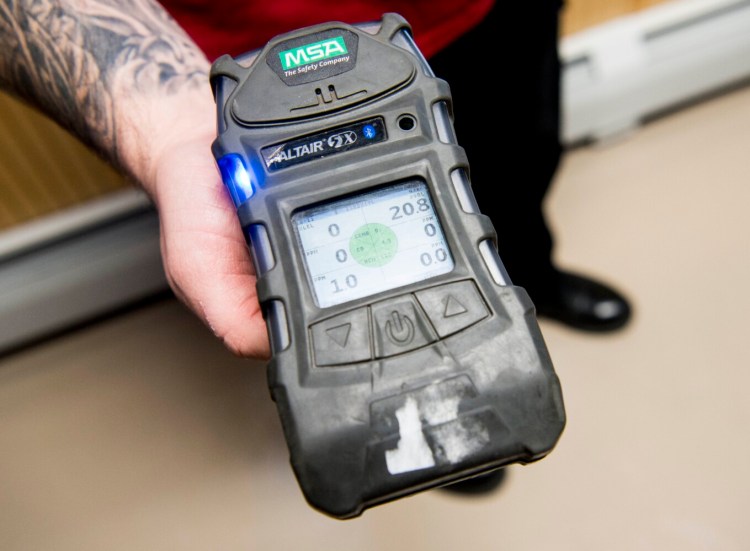MADISON — When a propane explosion rocked nearby Farmington in September, Madison fire Chief Don French felt shocked that something like this could happen in a small, rural Maine town.
On Sept. 16, 400 gallons of propane leaked into a business in Farmington and exploded, killing fire Capt. Michael Bell and injuring seven others.
French’s response was to get his station equipped with instruments that can detect gas leaks moving forward.
“I just wanted to make sure that our department and others were aware in order to do things right,” French said.
On Monday, French and the Madison department hosted a training session led by Waterville Firefighter Allen Nygren, whose department already has been using an older model of gas meter. Representatives of other stations who attended were from Anson, Athens, Bingham, Canaan, Cornville, Harmony, Madison, New Vineyard, Norridgewock, Solon and Starks.
Madison Fire Department received three Gas Alert Quattro meters. Two of them were donated by Backyard Farms, valued at over $1,000 a piece. The other meters were purchased by Bob Shibley of Bob’s Cash Fuel Oil.
French said that of the three meters, two will be located at the Company 1 station and the third will be at the Company 2 station, located in East Madison. Between the two stations, French said 20 firefighters are employed and all of them will be trained on how to use them and calibrate them.
“The tragedy in Farmington inspired this,” Shibley said at Monday night’s meeting at Madison Junior High School. “We were concerned that many stations in central Maine were not equipped with these. Our philosophy is that our customers are our friends and neighbors, and the thought of not having one of these devices was surprising.”
Each meter reads LEL and three specific gasses. LEL stands for lowest explosive limit, the lowest concentration of a gas or vapor that once ignited will produce a flash of flame. The monitors will detect the lowest explosive levels of a variety of combustible gases as well as O2, oxygen; CO, carbon monoxide; and H2S, hydrogen sulfide. The small, handheld meter comes equipped with calibration materials and needs to be tested every 180 days, though Nygren recommends a monthly check.
In order for the meters to work properly, they must be turned on in fresh air. All readings must be at zero, except for the O2 meter, which should always be at 20.9%. Nygren said that the meters can be reset if they are not reading correctly, but they’re designed to show an “error” message if the user tries to reset the meter and there is a high gas content in the air.
“I am very proud of the work that our Fire Department and Chief Don French, and equally proud of the commitment of Madison’s business community,” Town Manager Tim Curtis said in an email. “The contributions from Bob’s Cash Fuel and Backyard Farms are excellent examples of cooperation that results in better protection for our first responders and our residents.”
Monday evening’s training session involved about 70 local firefighters. Nygren led them through a lesson on the different ways that gases can be transported, the different states of gases and how much caution should be taken around them, the logistics of the meters and what the meters cannot read.
“The training Nygren put on was excellent and opened a lot of eyes up and got everyone to know how to use the equipment, how to know when to evacuate,” French said. “I am thankful for Backyard Farms, Bob’s Cash Oil Fuel and Al (Nygren) for their donations and time.”
Correction: The article has been changed for accuracy. Previously, the article stated that Shibley’s name was spelled Shipley. Additionally, each meter is valued at over $1,000 a piece.
Send questions/comments to the editors.




Comments are no longer available on this story